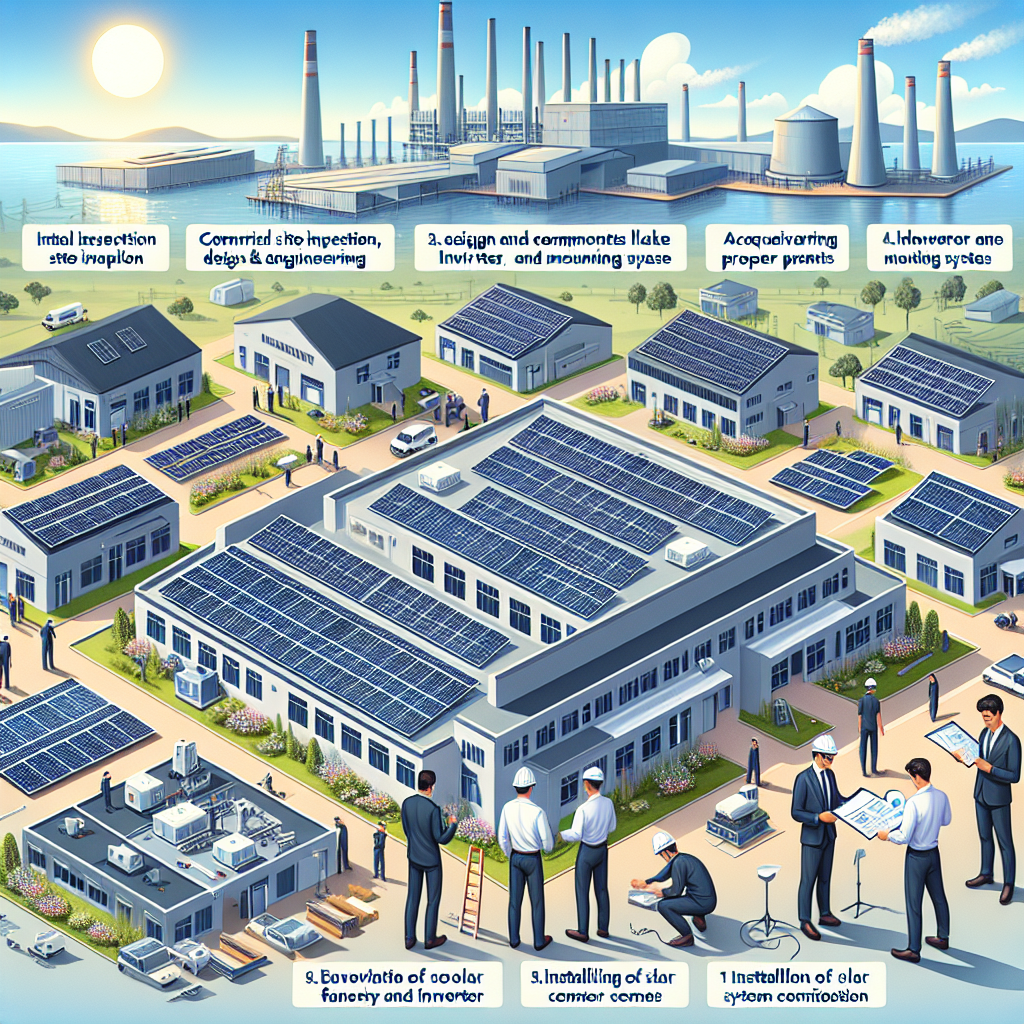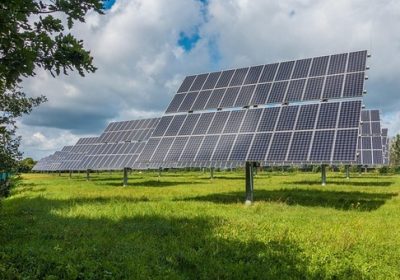Understanding the Commercial Solar Installation Process in Australia
Table of Contents
Understanding the commercial solar installation process in Australia is crucial for businesses looking to harness renewable energy and reduce operational costs. As the country continues to embrace sustainable practices, commercial solar power systems have become an attractive option for companies aiming to decrease their carbon footprint and achieve energy independence. The process involves several key stages, including initial consultation, site assessment, system design, installation, and maintenance. Each step is tailored to meet the specific energy needs and regulatory requirements of the business, ensuring optimal performance and compliance with Australian standards. By comprehending the intricacies of this process, businesses can make informed decisions, maximize their investment, and contribute to a more sustainable future.
Navigating Regulations: Key Considerations for Commercial Solar Installations in Australia
Navigating the regulatory landscape for commercial solar installations in Australia is a critical step for businesses looking to harness the power of renewable energy. As the country continues to embrace sustainable practices, understanding the key considerations involved in the installation process is essential for ensuring compliance and maximizing the benefits of solar energy. The journey begins with a thorough assessment of the regulatory framework, which varies across states and territories, reflecting the diverse energy policies and environmental goals of each region.
Firstly, businesses must familiarize themselves with the national standards set by the Clean Energy Council (CEC), which provides guidelines for the accreditation of solar installers and the approval of solar products. This ensures that installations meet safety and performance standards, thereby safeguarding investments and promoting consumer confidence. Additionally, the Australian Energy Regulator (AER) plays a pivotal role in overseeing the electricity market, ensuring that commercial solar installations align with broader energy policies and contribute to the national grid’s stability.
Transitioning from national to state-specific regulations, businesses must navigate a complex web of requirements that can significantly impact the installation process. For instance, in New South Wales, the Environmental Planning and Assessment Act mandates that certain commercial solar projects undergo a development application process, which includes environmental impact assessments and community consultations. Similarly, Victoria’s Solar Homes Program offers incentives for businesses, but also imposes specific criteria that installations must meet to qualify for rebates and financial support.
Moreover, understanding the grid connection process is crucial for commercial solar installations. This involves liaising with local network service providers to ensure that the solar system can be integrated seamlessly into the existing electricity infrastructure. The process often requires technical assessments and may involve upgrading network components to accommodate the additional energy supply. Consequently, businesses must allocate sufficient time and resources to navigate these technical and administrative hurdles.
In addition to regulatory compliance, businesses must also consider the financial implications of commercial solar installations. While the initial investment can be substantial, various government incentives and financing options are available to alleviate the financial burden. The Small-scale Renewable Energy Scheme (SRES) and the Large-scale Renewable Energy Target (LRET) are two key programs that offer financial incentives for solar installations, thereby enhancing the economic viability of such projects. Furthermore, businesses can explore power purchase agreements (PPAs) and leasing options, which provide alternative pathways to solar ownership without the upfront capital expenditure.
As businesses progress through the installation process, engaging with experienced solar installers and consultants is paramount. These professionals possess the expertise to navigate the regulatory landscape, ensuring that installations comply with all relevant standards and requirements. Moreover, they can provide valuable insights into optimizing system design and performance, thereby maximizing the return on investment.
In conclusion, understanding the regulatory considerations for commercial solar installations in Australia is a multifaceted endeavor that requires careful planning and execution. By familiarizing themselves with national and state-specific regulations, businesses can ensure compliance and capitalize on the numerous benefits of solar energy. Furthermore, by leveraging financial incentives and engaging with industry experts, businesses can navigate the complexities of the installation process with confidence, ultimately contributing to a more sustainable and resilient energy future for Australia.
Step-by-Step Guide to the Commercial Solar Installation Process in Australia

The commercial solar installation process in Australia is a comprehensive journey that involves several critical steps, each contributing to the successful deployment of solar energy systems. Understanding this process is essential for businesses considering the transition to renewable energy, as it ensures informed decision-making and optimal outcomes. The journey begins with an initial consultation, where businesses engage with solar providers to discuss their energy needs, financial goals, and site-specific conditions. This stage is crucial as it sets the foundation for a tailored solar solution that aligns with the business’s objectives.
Following the consultation, a detailed site assessment is conducted. This involves a thorough evaluation of the location’s solar potential, including factors such as roof orientation, shading, and structural integrity. The assessment helps in determining the most suitable solar panel configuration and system size, ensuring maximum energy production. Additionally, this stage involves analyzing the business’s current energy consumption patterns to design a system that effectively offsets their electricity usage.
Once the site assessment is complete, the solar provider develops a comprehensive proposal. This document outlines the proposed system design, estimated energy savings, financial analysis, and potential return on investment. It serves as a critical tool for businesses to understand the long-term benefits of solar energy and make informed decisions. The proposal also includes information on available government incentives and rebates, which can significantly reduce the upfront costs of installation.
With the proposal approved, the next step is obtaining the necessary permits and approvals. This process involves navigating local regulations and ensuring compliance with Australian standards. It is essential to work with experienced solar providers who are familiar with the regulatory landscape, as this can expedite the approval process and prevent potential delays.
Following the acquisition of permits, the installation phase commences. This involves the physical installation of solar panels, inverters, and other necessary components. The installation is typically carried out by a team of qualified technicians who ensure that the system is installed safely and efficiently. During this phase, it is crucial to adhere to strict safety protocols to protect both the installation team and the business premises.
After installation, the system undergoes a series of tests and inspections to ensure it operates at peak efficiency. This includes verifying the electrical connections, testing the inverter, and ensuring the system is correctly integrated with the existing electrical infrastructure. Once the system passes these inspections, it is connected to the grid, allowing the business to start generating solar power.
The final step in the commercial solar installation process is monitoring and maintenance. Solar providers often offer monitoring services that allow businesses to track their energy production and consumption in real-time. This data is invaluable for optimizing system performance and identifying any potential issues early on. Regular maintenance, such as cleaning the panels and checking the system components, is also essential to ensure long-term efficiency and reliability.
In conclusion, the commercial solar installation process in Australia is a multi-faceted journey that requires careful planning and execution. By understanding each step, businesses can make informed decisions that lead to successful solar energy adoption, ultimately contributing to a more sustainable future.
Financial Incentives and Benefits of Commercial Solar Installations in Australia
In recent years, the adoption of commercial solar installations in Australia has gained significant momentum, driven by a combination of environmental consciousness and economic incentives. Understanding the financial incentives and benefits associated with these installations is crucial for businesses considering this sustainable energy solution. The Australian government, recognizing the importance of renewable energy, has implemented several financial incentives to encourage businesses to transition to solar power. One of the most prominent incentives is the Small-scale Renewable Energy Scheme (SRES), which provides Small-scale Technology Certificates (STCs) to businesses that install solar systems. These certificates can be sold to energy companies, effectively reducing the upfront cost of solar installations. Additionally, the Large-scale Renewable Energy Target (LRET) supports larger solar projects by issuing Large-scale Generation Certificates (LGCs), which can also be traded for financial gain.
Moreover, businesses can benefit from the instant asset write-off scheme, allowing them to immediately deduct the cost of solar installations from their taxable income. This scheme not only reduces the initial financial burden but also enhances cash flow, making solar investments more attractive. Furthermore, the Australian Renewable Energy Agency (ARENA) offers grants and funding opportunities for innovative solar projects, further incentivizing businesses to adopt solar technology. Beyond government incentives, the financial benefits of commercial solar installations are substantial. One of the most significant advantages is the reduction in electricity bills. By generating their own electricity, businesses can significantly decrease their reliance on the grid, leading to substantial savings over time. This is particularly beneficial in Australia, where electricity prices have been on the rise. Additionally, businesses can take advantage of feed-in tariffs, which allow them to sell excess electricity back to the grid, creating an additional revenue stream.
The long-term financial benefits of solar installations are further amplified by the decreasing cost of solar technology. Over the past decade, the cost of solar panels and associated equipment has dropped significantly, making solar power more accessible to businesses of all sizes. This trend is expected to continue, further enhancing the financial viability of solar investments. In addition to direct financial benefits, commercial solar installations can enhance a company’s reputation and brand image. As consumers become more environmentally conscious, businesses that demonstrate a commitment to sustainability are likely to attract more customers and clients. This can lead to increased sales and improved customer loyalty, providing an indirect financial benefit that complements the direct savings from reduced energy costs.
Furthermore, investing in solar power can provide businesses with a competitive edge in the market. As more companies adopt sustainable practices, those that lag behind may find themselves at a disadvantage. By embracing solar technology, businesses can position themselves as industry leaders in sustainability, attracting environmentally conscious consumers and partners. In conclusion, the financial incentives and benefits of commercial solar installations in Australia are compelling. Government incentives, such as the SRES and LRET, reduce the initial cost of solar systems, while the instant asset write-off scheme and ARENA funding further enhance financial feasibility. The reduction in electricity bills, potential revenue from feed-in tariffs, and the decreasing cost of solar technology contribute to the long-term financial viability of solar investments. Additionally, the positive impact on brand image and competitive positioning provides indirect financial benefits that can enhance a company’s overall success. As the push for renewable energy continues, businesses that invest in commercial solar installations are likely to reap significant financial rewards while contributing to a more sustainable future.









